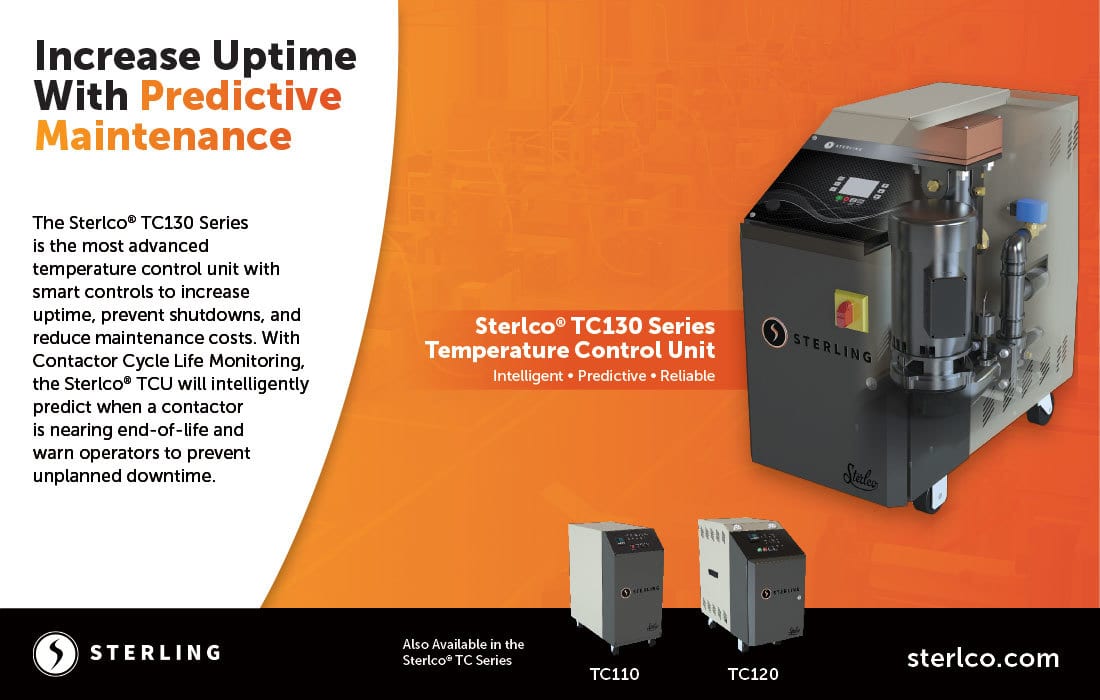Efficiency Matters
Heat Exchangers
All images provided by Alfa Laval
By Susan Hammock,
Alfa Laval Inc.
Plate heat exchangers can help in the pursuit of long-term energy savings in thermal processing operations.
The global demand for energy shows no signs of slowing down. Businesses in every industry seek new ways to increase their process efficiency while keeping energy costs down. Plate heat exchangers have been used in process heating and cooling for more than 60 years. Recent advancements allow them to be more efficient and effective than before.
While the overall appearance of plate heat exchangers has changed little over time, the plates themselves have undergone generations of innovations that have greatly increased thermal performance. The result is a means of improving energy efficiency in nearly any application. In many cases, the return on investment can be less than a year.
A gasketed plate heat exchanger consists of a series of corrugated plates assembled between thick steel covers and bolted together to retain pressure. Channels are formed between the plates, and gaskets direct the hot- and cold-side fluid flow through alternating channels while simultaneously sealing the passages (figure 1). Fluids normally run countercurrent through the heat exchanger. The platesʼ corrugation provides the passage for the flow, supports each plate against adjacent plates and enhances the fluid turbulence. This design provides efficient thermal performance and enables a close temperature approach (the temperature difference between the exiting process medium and the entering service medium).
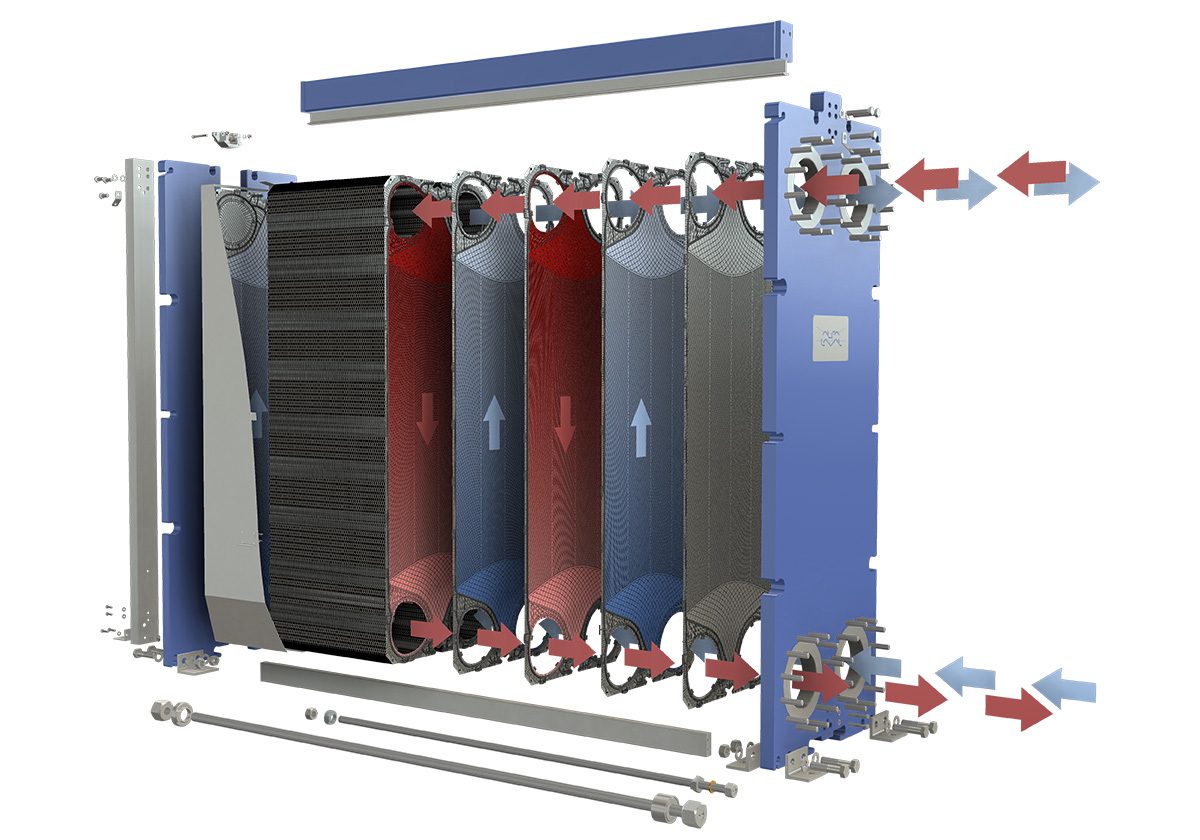
FIGURE 1. In this exploded view of a gasketed plate heat exchanger, the channels formed by gaskets between the corrugated plates direct fluid flow.
Plate heat exchangers have a smaller footprint than other exchangers such as the shell-and-tube design. Also, because plate heat exchangers have higher heat transfer coefficients, they can achieve higher heat transfer rates. In addition, the high channel turbulence increases thermal efficiency and provides a scrubbing effect on the walls of the plates. This helps reduce the risk of fouling.
Plate heat exchangers have a modular design, so heat transfer capacity can be increased or reduced at any time by adding or removing plates to match changing application requirements. An all-bolted construction eases access to the heat exchanger plates for any required cleaning or maintenance. A versatile heat transfer product, plate heat exchangers are available in many sizes, materials and configurations.
Opportunities for Energy and Capital Savings
A plate heat exchanger can serve a key role in many processes and help realize opportunities for energy and capital savings.
Energy Recovery. In almost all industrial businesses, power costs represent a substantial part of the operating budget. An easy way to save energy is to recover and reuse waste energy in your process. The impact of energy recovery is sometimes limited by the efficiency of the available technology, however.
Compared to earlier generations, modern gasketed plate heat exchangers have features that provide improved media flow and greater use of the heat transfer surface area. This allows operators to reuse energy that would have otherwise gone to waste, reducing fuel consumption as well as related emissions costs. While in some cases, energy recovery can lead to a heat surplus, there are many ways in which recovered heat can be used. For instance, it can be used within existing processes to preheat incoming streams, or it can be exported and sold.
Lower Heating and Cooling Costs. Advancements in plate design have made it possible for plate heat exchangers to operate with as little as a 2°F (1.1°C) temperature approach in some applications. In practical terms, this means the hot fluid or gas in cooling applications can be cooled to a temperature that is very close to that of the entering cold fluid or gas. This makes it possible to operate with a utility medium that has a starting temperature close to that of the process exiting temperature. Less energy is needed to heat or cool the utility liquid before it enters the heat exchanger, reducing overall operating expenses.
Reduced Capital Investment. Because of features that allow the improved flow of media across the plate, and better utilization of the heat transfer surface, operators can use a plate heat exchanger with fewer plates than before. In general, newer plate heat exchanger designs can be smaller and lighter, and their construction requires fewer raw materials.
A more compact heat exchanger design can reduce installation costs when replacing older technology or expanding plant capacity. For facilities where space is limited, it is easier to install the heat exchanger. It may allow for more capacity within an existing footprint.
Minimized Downtime and Heat Transfer Losses from Fouling. Fouling-related downtime is a productivity issue, but it also affects efficiency. As fouling builds up, thermal performance decreases and pressure drop increases, requiring higher energy consumption. Pumping fluid through a fouled heat exchanger also requires more power.
Modern plate design improvements can help reduce fouling risks by enhancing fluid distribution and eliminating stagnant zones on the plates. In addition, improved frame designs make it easier to open and close the heat exchanger, reducing overall maintenance time and cost.
Case in Point: Wide-Gap Plate Exchanger Solves Problems at Ethanol Refinery
An ethanol production facility in the Midwest utilizes corn/milo to produce ethanol via natural fermentation. The plant produces fuel-grade ethanol for blending with gasoline and other motor fuels at a capacity of 135 million gallons per year.
The plant identified the mash train as one of the limiting factors in achieving optimal operation. They needed lower pressure drops as well as better beer temperatures at increased flow rates, and their current equipment was not getting the job done.
The team at the heat exchanger manufacturer recommended its wide-gap gasketed plate heat exchanger. The exchanger is suitable for fluids containing coarse particles or fibrous material. The wide gaps between the plates allow fibers and particles to easily pass through the heat exchanger with minimum clogging and maximum process uptime. The design helps prevent fouling.
In addition, it is suitable for heat recovery in the beer-mash interchanger position due to the large surface area available per plate. Beer from the fermenters needs to be heated before the distillation step, and mash from the cooker needs to be cooled before fermentation. This is where the beer-mash interchanger is used to reclaim the energy from the cooker.
The heat exchanger manufacturer replaced one existing heat exchanger with a wide-gap unit. Larger gaps between plates in the wide-gap unit helped minimize clogging and reduced cleaning frequency and costs. The wider gap plate also reduced the pressure drop which allowed for more passes in the unit. This led to 10°F (5.5°C) hotter beer temperature exiting the interchanger.
Skeptical at first, the producer only converted one of their mash trains to the wide-gap heat exchanger to test the technology. After one year of data to prove the design, the other mash train was upgraded to the wide-gap heat exchanger design.
As a result of the changes, the ethanol producer reaped benefits. The 10°F increase in beer temperature is estimated to provide an energy savings of $150,000 per year. In addition, increasing the service interval from two-to-three fermentations to four-to-five fermentations doubled the run time and reduced chemical expenses by half.
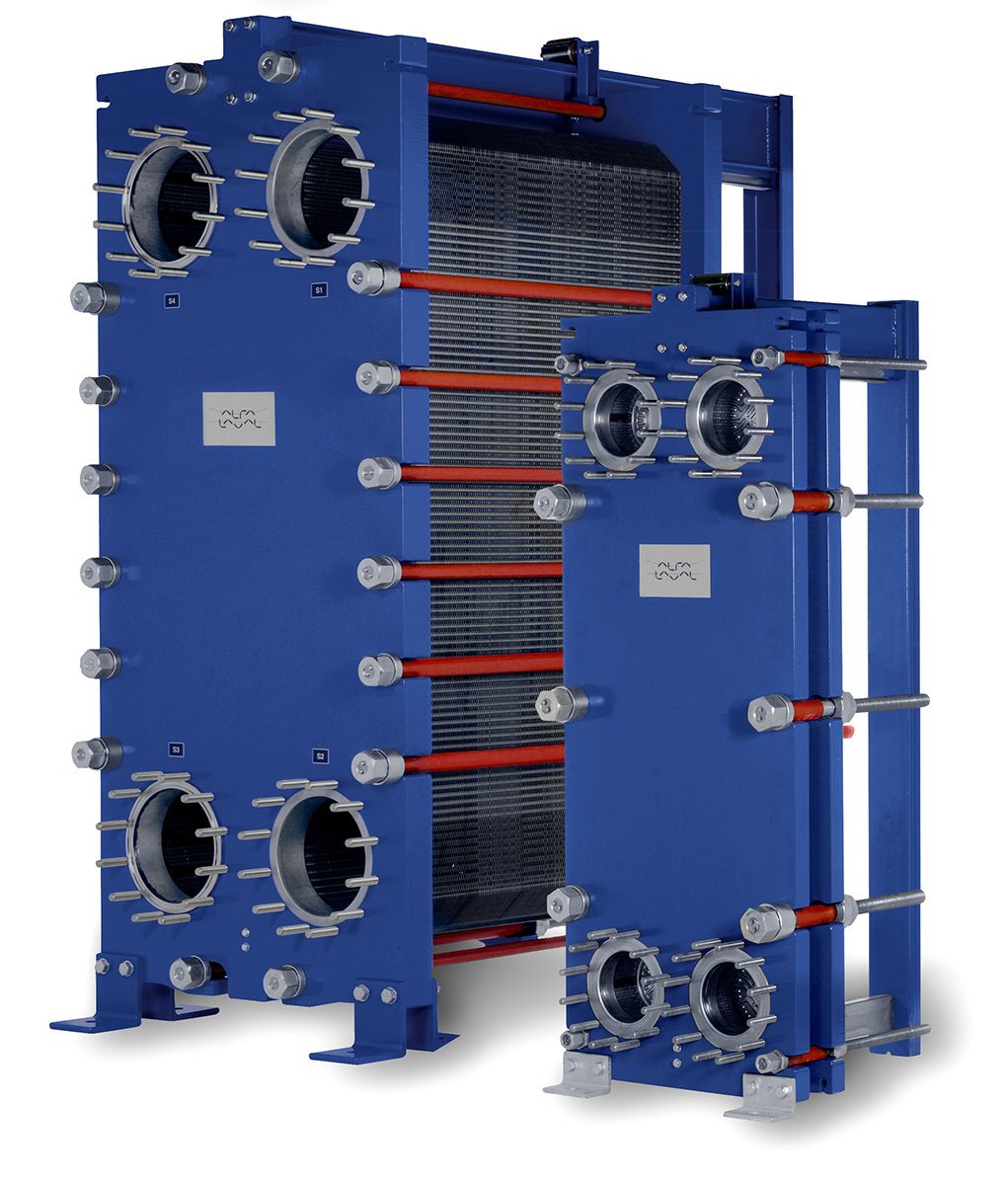
Figure 2 illustrates how fouling can lead to energy losses that must be compensated for. In this example, additional steam must be used to achieve the cold-side outlet temperature needed for the process. Depending on the operating case, the losses from fouled heat exchangers can be thousands of dollars per year.
Exchanger Design Developments
Rather than a single advancement, modern heat exchangers are the product of a long series of developments. In recent years, engineers have improved thermal performance through changes in the design of the plate, frame and gasket. Understanding the many ways heat exchanger efficiency has improved can be useful when evaluating the technology.
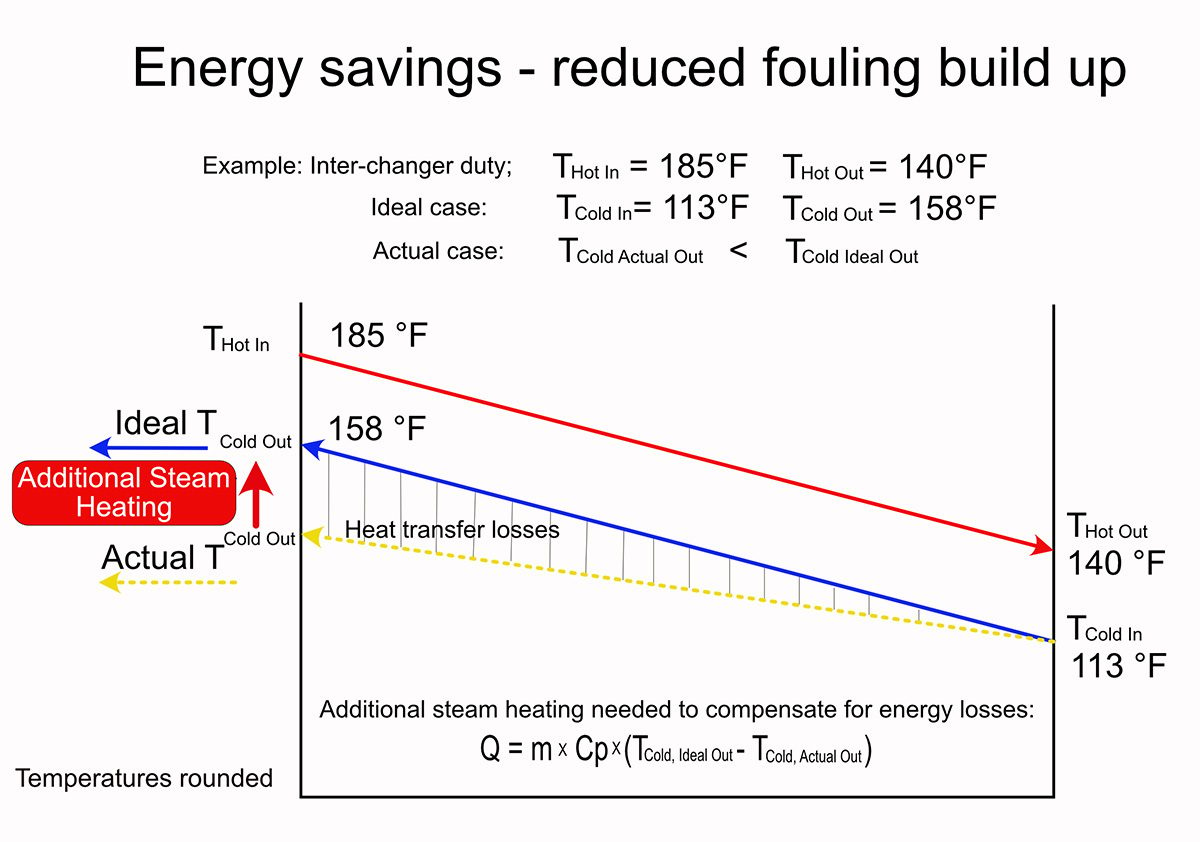
FIGURE 2. Fouling can lead to energy losses that must be accounted for in the process operations.
Flow Distribution Area. Improving the flow of media across the plate eliminates dead spots and stagnant zones. These stagnant zones are areas of low flow velocity where fouling will start to form and grow (figure 3). Fouling leads to energy losses and increased maintenance, so the plate distribution area is especially important in applications where fouling can occur.
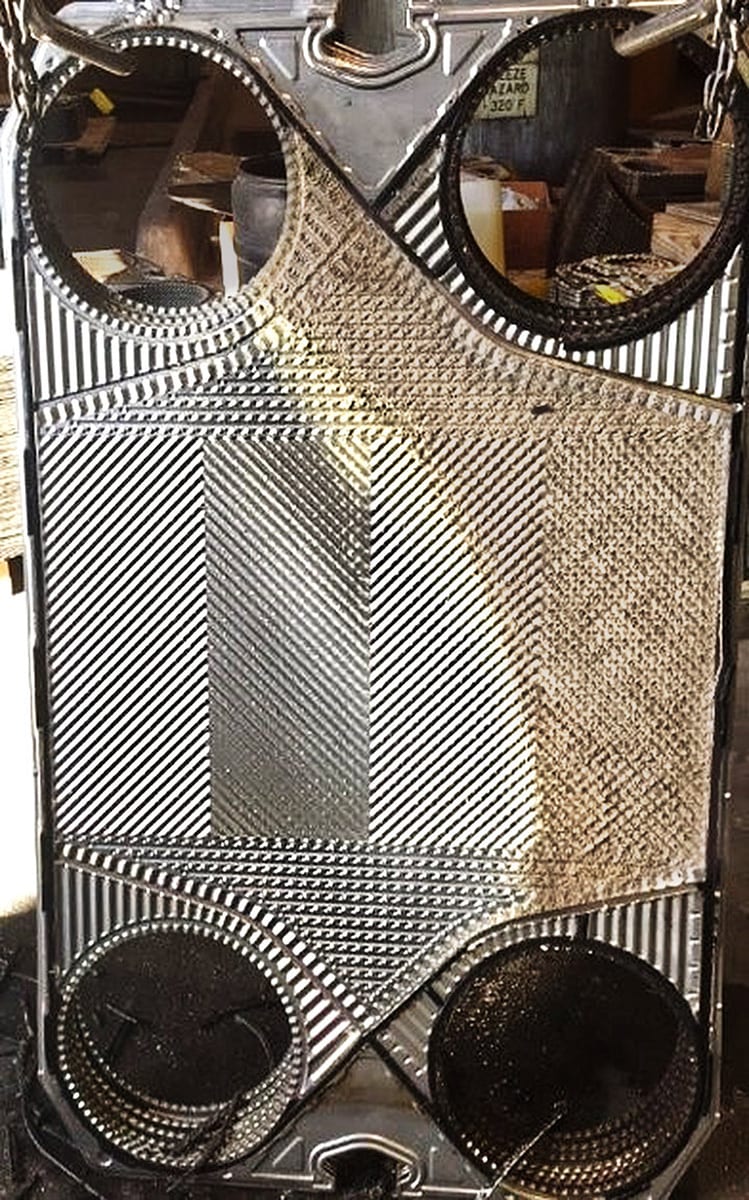
FIGURE 3. Poor flow distribution creates a fouled stagnant zone on the plate.
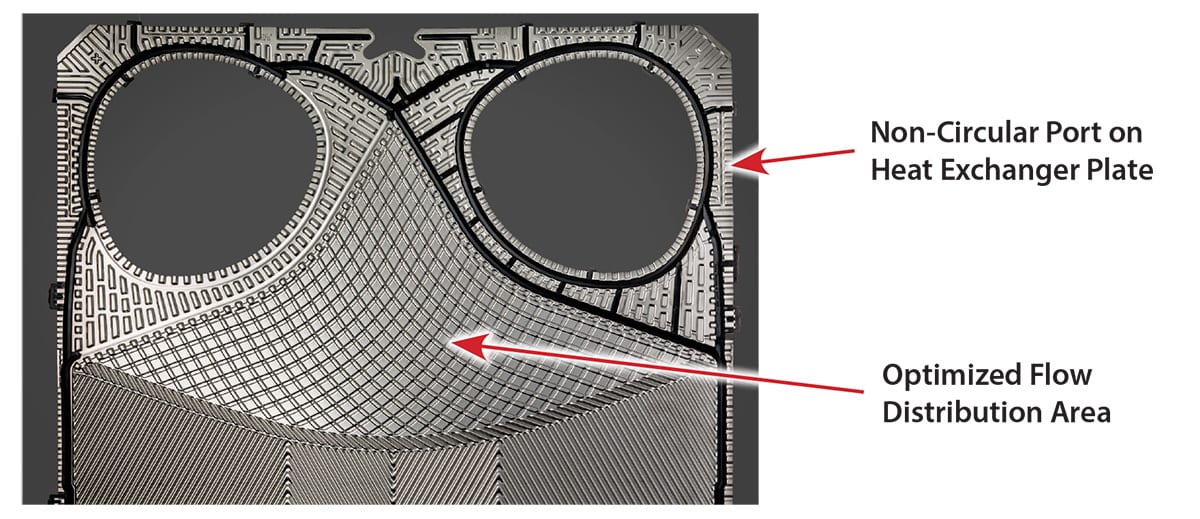
FIGURE 4. By optimizing the distribution area of the plate, it is possible to use more of the plate and get a larger available heat transfer area.
The plate distribution area is responsible for ensuring media flow is distributed uniformly across the face of the plate. This area has evolved greatly throughout the product’s lifetime. Design features in the distribution area of the plate make it possible to use more of the plate and get a larger available heat transfer area (figure 4).
Inlets and Outlets. Plate inlets and outlets have traditionally been circular, but recent developments in technology suggest that this shape does not always provide the ideal flow of media across the heat transfer area. Non-circular designs can enhance flow (figure 4), allowing for decreased pressure drop and increased throughput along with further improved utilization of the plate surface area. Thus, fewer plates or less pressure drop is required for the same duty.
Channel Design. In a heat exchanger with a traditional symmetrical plate configuration, the volume capacity of the channel used for the utility medium matches the one used for the process liquid. This has long resulted in inefficiencies when there are dissimilar flow rates or fluid characteristics.
A plate heat exchanger with asymmetric channels can be configured with wide or narrow channels on either side to allow for optimized design when flow rates and fluids are different (figure 5). This results in the more effective use of heat transfer and pressure drop as well as a more compact heat exchanger.


FIGURE 5. A plate heat exchanger with asymmetric channels can be configured with wide or narrow channels on either side to allow for optimized design when flow rates and fluids are different.
Symmetric Plate Channels
Asymmetric Plate Channels
Frame Design. Modern plate and frame heat exchangers are designed to ease opening and closing, simplifying servicing the unit. Once opened, the full heat transfer surface area is exposed for cleaning and maintenance. Special tools are not required, and there are no tubes to pull. Bearing boxes reduce the force necessary to close a unit (figure 6), and lock washers keep the forces across the bolt even for a smooth tightening process.
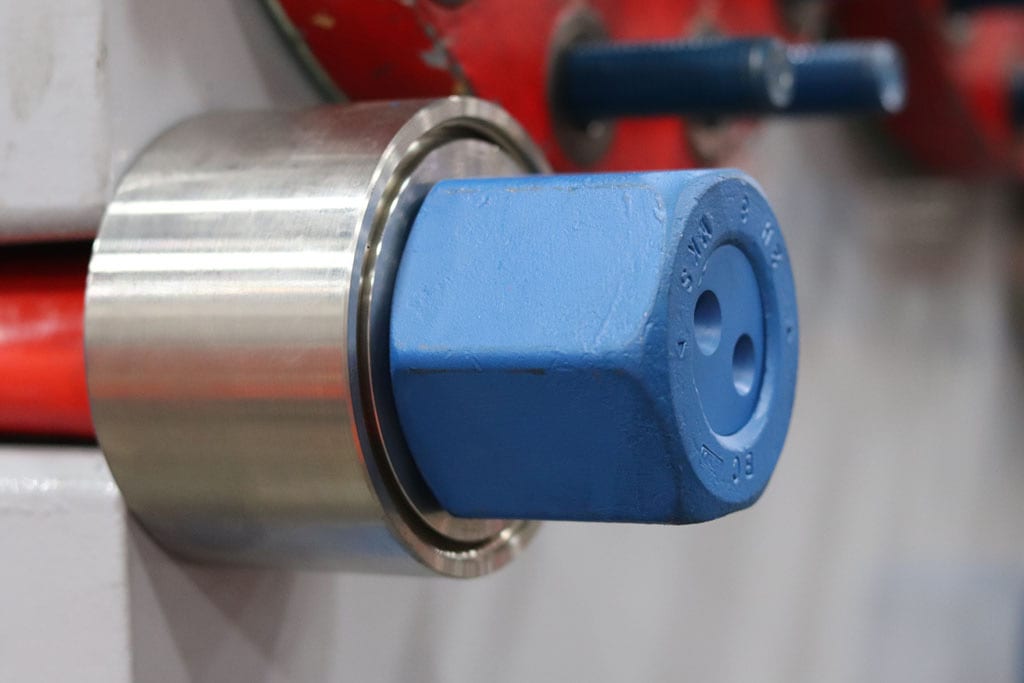
FIGURE 6. Bearing boxes reduce the force necessary to close a unit.
Semi-Welded Plates. Semi-welded plates are suitable for chemical process, refrigeration and industrial utility applications. The sealing between the plates alternates between laser welds and gaskets. The laser-welded channel allows the heat exchanger to be used with fluids that are not compatible with normal gaskets. Innovations in semi-welded plate heat exchangers such as high performance gasket sealing have expanded their range up to a 900 psi design pressure rating for some models.
Wide-Gap Plates. Wide-gap plate heat exchangers are used for fibrous liquids, highly viscous fluids and fluids containing coarse particles. The wide gaps between the plates, the plate pattern and the smooth port design allow fluids with fibers and particles to easily flow through the heat exchanger without clogging (figure 7). Wide-gap plates have a wider pressing depth, higher thermal efficiency and better flow geometry than conventional alternatives. These features provide benefits such as compact size, better heat recovery, lower cooling water consumption and the possibility to use lower grade steam and increased production.

FIGURE 7. Wide-gap plate heat exchangers are used for fibrous liquids, highly viscous fluids and fluids containing coarse particles.
In conclusion, from reducing capital investment and operational costs to boosting production capacity, modern plate heat exchangers offer valuable ways to increase profitability. Efficient heat transfer solutions enable energy savings, improve heat recovery opportunities and reduce carbon dioxide emissions. Not all heat exchangers are engineered equally, however, so be sure to evaluate any new equipment carefully to ensure maximum potential for your investment. There are significant opportunities to optimize processes and meet energy goals by utilizing advancements in plate heat exchanger technology.
Susan Hammock is the industrial GPHE sales manager for the Energy Division of Alfa Laval Inc., Richmond, Va. For more information from Alfa Laval, call 804-222-5300 or visit alfalaval.us.
